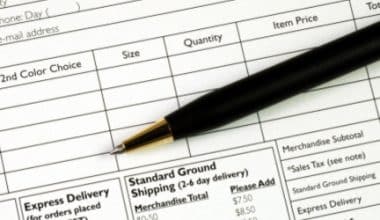Have you ever heard of the term ACH credit before? Do you know what it stands for? Well, whether your answer is yes or no, there is a good chance that you’ve either received or sent one before. That’s because it goes by several other names, like “direct deposit” and “peer-to-peer payment”.
Thanks to their usefulness when paying utility bills, settling payrolls, or even directly depositing tax refunds, ACH credits are favored for being a secure and reliable way to send money directly to someone’s bank account. So, if you want a dependable payment method that doesn’t go through an intermediary, the answer could be ACH credits.
Key takeaways
ACH stands for Automated Clearing House.
The ACH Network processes two kinds of ACH transactions: direct deposits and direct payments.
ACH allows users to move from one bank account to another easily and inexpensively.
Examples of ACH transfers include getting your pay through direct deposit or paying your bills online through your bank accounts.
What is ACH?
The ACH Network stands for Automated Clearing House Network. It is a system where funds are electronically transferred from one party to another and allows for safe money transfers online, such as for direct deposits or bill payments.
In other words, ACH is an electronic money network that connects various financial institutions to facilitate payments between accounts, regardless of which banks those accounts belong to.
There are two types of transactions on the ACH network: ACH credits and ACH debits. The term ACH credit specifically refers to the type of transaction in which money is “pushed” from an originating account to a destination account. An ACH debit transfer, meanwhile, involves a receiving account “pulling” money from the source account.
A typical example is using ACH credits for payroll: the employer pays employees by “pushing” electronic payments into their checking accounts. In addition to paychecks, ACH credits can also include government benefits, refunds, or withdrawals from payment services like Venmo.
ACH credit vs ACH debit: What is the difference?
ACH credits are one of two types of ACH transfers, the other being an ACH debit (or ACH withdrawal).
While ACH credits are “push” transactions, ACH debits pull funds in. In other words, the person making a payment allows the person they’re paying to withdraw money from their account.
ACH debits are commonly used for recurring payments like electric bills and mortgages. The payer gets the convenience of automatic payments from their checking account every month, and the receiver doesn’t need to process manual payments.
If you’re sending money, you’ll likely use an ACH credit. But if you have a supplier or vendor to whom you make regular payments, they might ask you to set up ACH debits to make processing the payment smoother with no lift on your end.
How do ACH credits work?
Every Automated Clearing House payment (ACH payment) runs through the US clearing house system, a network of United States financial institutions. The network includes the Federal Reserve and is overseen by the National Automated Clearing House Association (NACHA). The ACH network is primarily used to make domestic electronic payments between US banks and credit unions.
Each person or business has to authorize the funds transfer. This includes the party making the ACH payment and the party receiving the money. You can only move money to or from someone else’s bank account with their permission. In addition, many authorization forms allow the payer to take money back if they send too much in error.
Once the authorization is complete, whoever is initiating the ACH payment instructs their financial institution to either push the funds out (an ACH credit) or pull them in (an ACH debit). This can be done manually or set up as a recurring transfer.
Behind the scenes, the originating depository financial institution batches all of its ACH transfer requests together and sends them to a clearinghouse that verifies the transfers. The clearinghouse then sends each transfer to the receiving depository financial institution.
ACH credit fees
ACH transaction fees are usually low — but some banks and credit unions do still charge a fee when you arrange a payment.
Here’s a rundown of some common outgoing ACH payment fees by bank:
| Bank | Fees for outgoing ACH payment |
|---|---|
| Bank of America | $3 ($10 for next-day delivery) |
| Chase | Fees vary based on account type. Can be free for personal customers |
| TD Bank | $0 (fees may apply for rush payment services) |
| US Bank | Up to $3 |
| Wells Fargo | $0 |
Benefits of ACH credits
The ACH payment network offers benefits to businesses and consumers alike. For businesses, ACH payments make it faster and easier to collect payments from customers. There’s no need for customers to mail a check or pay with cash in person. ACH payments are generally less costly for businesses to process compared to credit card payments.
For consumers, ACH payments offer a simpler process for paying bills. You can log in to your bank’s website, enter your biller’s details, and schedule payments in minutes directly from your bank account. If you want to simplify things even further, you can schedule recurring ACH payments for your monthly bills.
Getting paid via direct deposit can be more convenient than being handed a paper check. With direct deposit, you know roughly when funds will hit your bank account and when they’ll be available. You don’t have to race to the bank before it closes to deposit a paper check or spend several days waiting for a mobile check deposit to clear.
Drawbacks to ACH credits
While ACH is convenient, it’s not a perfect system for sending and receiving money. Unless you send same-day ACH payments, transactions can take a few business days to process. Also, daily cutoff times apply to ACH transactions, which can delay processing times.
Your bank may limit the dollar amount you can send via ACH or the number of transactions you’re allowed to complete each month. Most banks typically limit you to six withdrawals per month from a savings account. However, your bank may impose other restrictions when sending money overseas through the ACH network.
Examples of ACH credits
People and businesses are most likely to use ACH credit transactions to pay bills, collect income, or receive benefits payments from the government. Whenever a routing number and account number are involved in making a transaction, that signals the transaction was likely an ACH transfer. Examples of ACH credits include:
Direct deposit
Direct deposits from an employer to an employee’s checking account are a type of ACH credit. The employer has likely set up an automatic recurring ACH transfer that operates as a credit—pushing the money from their bank account to yours.
Bill payments
It’s not uncommon for utility companies to require ACH payment for a water or electric bill. That’s why they might ask for a routing and account number, making it possible to pay the bill online. However, it’s not strictly limited to utility bills. It could be any type of bill if the company wants payment in this way.
Government benefits
Perhaps the most recognized example of receiving government benefits as an ACH credit transfer would be the $1,200 COVID-19 stimulus payment, distributed to every American who met certain requirements. In this case, the government pushed money from its accounts to recipients.
Buying goods online
There are times when simply typing in a credit card number won’t work for online purchases. When making purchases from a smaller merchant unable to process credit card payments (or perhaps a vendor operating overseas), ACH credits can work just as effectively to push money to a store or business owner.
How long does ACH credit take?
ACH credit transfers can be processed in one to three business days (the ACH network isn’t active on weekends or holidays). Some financial institutions will offer same-day ACH transfers if the receiving account is at the same bank, although this can come with an additional fee.
For example, Bank of America posts ACH transactions the next business day unless you opt for a same-day ACH transfer, which has a maximum transfer amount of $100,000.
However, remember that an ACH transaction being posted and processed are two different things. Banks will only deposit the ACH credit once the funds are successfully pulled from the payer’s account to avoid ACH returns.
ACH credits with higher dollar amounts are often subject to longer processing times. Banks want to avoid being left in the lurch if they deposit the funds and the transaction gets reversed due to an error.
Who uses ACH credits?
Businesses use ACH credits to deposit paychecks and benefits for workers. They also pay recurring bills and send one-time payments with B2B ACH transfers. Using ACH saves time and is more secure than sending paper checks.
Typically, consumers can only initiate ACH credits online transfers to their bank accounts. For example, someone might use ACH credit transfers when sending money from a checking account to a savings account at another bank.
Other types of ACH transfers
ACH transfers can make life easier for both the sender and recipient. They allow you to send and receive money conveniently and securely without ever having to leave your home. The ACH Network processes two kinds of ACH transactions: direct deposits and direct payments.
ACH Direct Deposits
An ACH direct deposit is any kind of electronic transfer made from a business or government entity to a consumer. The kinds of payments that fit in this category include direct deposits of:
- Paychecks
- Employer-Reimbursed Expenses
- Government Benefits
- Tax Refunds
- Annuity Payments
- Interest Payments
With ACH direct deposits, you receive money. When you send one, you make an ACH direct payment.
ACH Direct Payments
Direct payments can be used by individuals, businesses, and other organizations to send money. For example, if you’re paying a bill online with your bank account, that’s an ACH direct payment. Social payment apps such as Venmo and Zelle also use the network when you send money to friends and family.
In an ACH direct-payment transaction, the person sending the money sees an ACH debit appear in their bank account. This debit shows to whom the money was paid and for what amount. The person or entity receiving the money registers it in their bank account as an ACH credit.
Final thoughts on ACH credit
ACH credits are a quick and accessible way to move money from a sender’s account to a receiver’s account. Whether it’s to distribute worker salaries or government benefits, buy an item online, or pay a utility bill, the ACH network continues to be a kind of money highway that moves trillions of dollars in transactions in a year.
There’s little specialized knowledge or hardware required, and merchants don’t need to invest in niche payment processing technology that can come with recurring fees. All they need is a conventional checking account. The entity initiating the ACH credit only needs to know the destination routing and account number.
With this, ACH credits remain a simple and compelling way to do business across the US and worldwide.
Recommended Articles
- Credit Card Data Breach: How Do Credit Cards Get Breached?
- AVERAGE CREDIT SCORE BY AGE: What You Need to Know About Each Age
- Choosing Upselling & Cross-selling Strategies to Strengthen Your Sales Approach
- What is APR on a Credit Card and How Does it Work?
- Navigating the World of No Credit Check Loans: A Guide to Legitimate Options
- Can You Buy a Money Order With a Credit Card?






